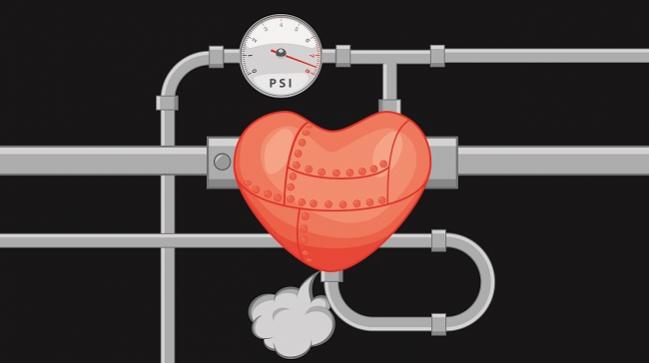Final MOMENTUM 3 Results Secure Superiority Claim for HeartMate 3 LVAD
Building on prior 2-year results for a subset of the overall trial, these latest findings prompted some to ask if it’s time to look at lower-risk patients.

NEW ORLEANS, LA—Final, full results from the MOMENTUM 3 trial show that the HeartMate 3 magnetically levitated, centrifugal-flow left ventricular assist device (LVAD) is superior to the previous-generation HeartMate II, a mechanical-bearing axial continuous-flow pump (Abbott), significantly improving survival free from disabling stroke or reoperation/replacement at 2 years.
Presenting the late-breaking results earlier this week at the American College of Cardiology 2019 Scientific Session, Mandeep R. Mehra, MD (Brigham and Women’s Hospital, Boston, MA), put the magnitude of the benefit in perspective by saying, “For every 100 patients implanted with HeartMate 3 rather than HeartMate II over a 2-year period, 108 adverse events are averted.” These include key hemocompatibility-related adverse events: namely, 22 pump thromboses, 20 strokes, and 68 bleeds.
Two prior, interim reports from MOMENTUM 3 have been released, including 2-year results for the first 366 patients. But the latest data, published simultaneously in the New England Journal of Medicine represent the largest, fastest-enrolling cohort of patients ever studied for an LVAD trial, Mehra said.
“It just shows that there was a hunger to treat these patients,” he told the press at a briefing after his presentation. “We showed a reduction in thrombosis, we showed a reduction in stroke, we showed a reduction in bleeding, and what I haven’t shown you here is we also showed a reduction in ventricular arrhythmias with this pump. And of course, what matters most for healthcare resources is the reduction in readmissions and days spent in the hospital.”
The US Food and Drug Administration approved the HeartMate 3 last October, based on earlier reports from the MOMENTUM 3 trial.
Final Results
The final MOMENTUM analysis included 1,028 advanced-stage heart failure patients randomly allocated to the centrifugal- or axial-flow pumps. The primary composite endpoint of survival at 2 years free of disabling stroke or reoperation to replace or remove a malfunctioning device was reached by 64.8% of HeartMate II patients and 76.9% of HeartMate 3 patients (RR 0.84; 95% CI 0.78-0.91; P < 0.001 for superiority). Pump replacement, stroke of any severity, major bleeding, and gastrointestinal hemorrhage were all significantly more common with the older LVAD design.
Many of these secondary endpoints will be particularly meaningful to patients, observed Gurusher Panjrath, MD (George Washington University School of Medicine, Washington, DC), who discussed the findings during the press conference.
“Obviously we like to highlight the survival, but there are so much more goes into the lives of these patients more than the survival,” Panjrath said. “Stroke, days out of the hospital, [these] are very meaningful for them. And in this particular analysis, GI bleeding has also come done, which really important for these patients.”
Echoing a point also made by Clyde Yancy, MD (Northwestern University Feinberg School of Medicine, Chicago), following the main-tent presentation of the results, Panjrath said: “The next step now is to pause and think how do we go further from here? [And] can we go for a low-risk population?”
Mehra, in response, cautioned against expanding access without careful study, but that said, added: “We believe that we do have a much more forgiving pump that is ready to be studied in that population.”
But Mehra also had some caveats, noting that the most common causes of death in the trial were related to right heart failure and infection. “As we start to move this information into the less-sick, more-ambulatory population, I think that we need to think of more disruption in the technology that reduces the risk of infection, and perhaps that would come from using the wireless powering device where the driveline doesn’t have to exit the body. But we also are curiously noting a significant infection rate after 2 years that is beyond just the driveline, suggesting that we need to do more to understand why that is.”
Additionally, Mehra stressed that investigators were “thrilled” to see both pumps perform so well, yielding 80% survival in each group, matching survival rates typically seen for heart transplantation.
“We may have reached a ceiling of how much improvement in survival can occur under the current construct of these devices,” he said. “We have really reached a point with these devise were we have added years to a patient’s life, and now we are starting to see data where we’ve now added life to these patient’s years, where they are not suffering the complications in this journey [such as] strokes and GI bleeding.”
Shelley Wood was the Editor-in-Chief of TCTMD and the Editorial Director at the Cardiovascular Research Foundation (CRF) from October 2015…
Read Full BioSources
Mehra MR, Uriel N, Naka Y, et al. A fully magnetically levitated left ventricular assist device—final report. N Engl J Med. 2019;Epub ahead of print.
Disclosures
- Mehra reports serving as a consultant for Abbott, Portola, Bayer, and Xogenex; a trial steering committee member for Medtronic and Janssen; a scientific advisory board member for NupulseCV and FineHeart; and a DSMB member for Mesoblast; as well as receiving travel support from Abbott.
- Panjrath reports having no conflicts.


Comments